KCPE PAST PAPERS 2015: SCIENCE QUESTIONS AND ANSWERS [QNS 1-25]
Question 01.
The main function of the hair and mucus found in the breathing system is to
Question 02.
The following are characteristics of a certain type of tooth:
(i) sharp
(ii) chisel shaped (iii) has one root The type of tooth described is a
Question 03.
Which one of the following pairs of diseases is correctly matched with the time of immunization?
Question 04.
Which is the last stage in energy transformation when a kerosene stove is burning?
Question 05.
The diagram below represents a set-up that can be used to demonstrate a certain aspect of heat energy.
The aspect that can be demonstrated is
Question 06.
Which one of the following is a compound fertilizer?
Question 07.
Which one of the following statements is correct about the digestive system?
Question 08.
The picture below represents a type of interdependence between plants.
The type of interdependence represented
Question 09.
A pupil used water that had been used in rinsing clothes to mop the floor. Which method of water conservation did the pupil practice?
Question 10.
The importance of fibre in the human diet is to help in the
Question 11.
The following are characteristics of a certain animal:
(i) lays eggs
(ii) has constant temperature (iii) has a hairy body The animal is likely to be
Question 12.
The picture below shows a tomato plant with a sign of crop disease.
The sign shown is
Question 13.
Which one of the following components of air is correctly matched to its percentage?
Question 14.
Which one of the following is a social effect of drug abuse?
Question 15.
he chart below represents a simple classification of plants.
Which one of the following plants is not correctly classified?
Question 16.
A child has the following signs and symptoms:
(i) gets out of breath
(ii) pale skin (iii) dizziness. Which one of the following foods should the child feed on?
Question 17.
Which one of the following materials is non magnetic?
Question 18.
Which one of the following statements is correct about proper use and storage of medicine?
Question 19.
Anaemia and irritation in livestock can be a sign of attack by
Question 20.
Which of the following body fluids is the least likely to transmit HIV?
Question 21.
The picture below shows parts of a flower.
Question 22.
Which one of the following physical changes observed in boys and girls during adolescence is not correctly matched?
Boys Girls
Question 23.
Which one of the following livestock parasite control measures can be applied for both ticks and tapeworms?
Question 24.
Which one of the following methods will mainly conserve soil and not water?
Question 25.
In a certain activity, a sample of soil was mixed with water in a transparent container, shaken and allowed to settle.
|
|
|
One of the following is not a component of soil?
- A. Rock particles.
- B. Water.
- C. Plant.
- D. Air.
The diagram below represents a set up that can he used to investigate good and poor conductors of electricity’?
- A. Pencil.
- B. Aluminium foil.
- C. Steel wool.
- D. Rubber band.
The diagram below represents a claw hammer in use.
- A. V and Y.
- B. W and X.
- C. V and X.
- D. W and Y.
In a certain investigation pupils sat at different positions around a pupil who was ringing a hell.
- A. Special sounds.
- B. Loud and soft sound.
- C. Noise pollution.
- D. Direction of sound.
-
FULL SET EXAMS FROM PLAYGROUP TO STANDARD 8
https://drive.google.com/open?id=1cdxLC-nRPWN1S47IUQNNEB81Aoar4AaT - DOWNLOAD MORE KCPE 2014 PAST PAPERS AND MARKING SCHEMEShttps://www.atikaschool.org/kcpe-past-papers-and-answer/kcpe-2014-past-papers-questions-answers-and-reports
K.C.P.E PAST PAPERS: 2012 SOCIAL STUDIES REPORT
Candidates General Performance
candidates ‘performance for the last four years
| YEAR | CANDIDATURE | MAXIMUM MARK | MEAN | STANDARD DEVIATION |
| 2012 | 811,688 | 60/60 | 37.32/60 | 10.13 |
| 2011 | 766,355 | 59/60 | 33.13/60 | 9.12 |
| 2010 | 724,388 | 60/60 | 38.88/60 | 9.74 |
| 2009 | 719,712 | 59/60 | 37.46/60 | 9.80 |
The following observations are made from the table above:
- There was a 5% increase in candidature in 2012.
- The standard deviation increased from 9.12 in 2011 to 10.13 in 2012, meaning there was a larger spread of scores (performance).
- The mean has increased from 33.13 in 2011 to 37.32 in 2012, an indication of a better performance.
Syllabus coverage
KCPE Social Studies Syllabus Coverage in 2012
| SN. | CONTENT AREA | NO OF ITEMS | PERCENTAGE |
| 1.0 | PHYSICAL ENVIRONMENT | 11 | 18% |
| 2.0 | PEOPLE & POPULATION | 6 | 10% |
| 3.0 | SOCIAL RELATIONS & CULTURAL ACTIVITIES | 4 | 7% |
| 4.0 | RESOURCES AND ECONOMICAL ACTIVITIES | 19 | 32% |
| 5.0 | POLITICAL DEVELOPMENTS AND SYSTEMS | 8 | 13% |
| 6.0 | CITIZENSHIP | 2 | 3% |
| 7.0 | DEMOCRACY AND HUMAN RIGHTS | 2 | 3% |
| 9.0 | LAW, PEACE AND CONFLICT RESOULUTION | 4 | 7% |
| 10.0 | THE GOVERNMENT OF KENYA | 4 | 7% |
| TOTAL | 60 | 100% |
Distribution of Cognitive Skills
Distribution of cognitive Skills in The 2012 KCPE Social Studies
| SKILLS TESTED | NO OF ITEMS | PERCENTAGE |
| KNOWLEDGE | 6 | 10% |
| COMPREHENSHION | 12 | 20% |
| APPLICATION | 14 | 23% |
| ANALYSIS | 16 | 27% |
| SYNTHESIS | 6 | 10% |
| EVALUATION | 6 | 10% |
| TOTAL | 60 | 100% |
Analysis of Performance per Item
Questions with a facility index of 35 % and below
Question 18:
Who among the following members of a school management committee ensures that money is used properly?
- A. The chairperson.
- B. The sponsor.
- C. The head teacher.
- D. The treasurer.
Question 19:
Which one of the fol1owin statements is true about the policy of assimilation used by the French in Senegal?
- A. Africans became citizens of France.
- B. The French were made to learn African languages.
- C. The French appointed Africans to rule Senegal.
- D. Africans were refused to vote in general elections.
Response Pattern
| OPTION | A* | B | C | D |
| % CHOOSING PATTERN | 31.80 | 20.23 | 24.69 | 22.01 |
| MEAN MARK | 43.72 | 32.35 | 34.83 | 35.72 |
|
|
Question 47
The main reason why petroleum products are transported using a pipeline is that it
- A. reduces the number of heavy vehicles on roads
- B. costs less than using other forms of transport
- C. protects the petrol from being stolen
- D. ensures that petrol is safe from fire.
Response Pattern
| OPTION | A | B* | C | D |
| % CHOOSING PATTERN | 19.35 | 21.88 | 10.89 | 46.57 |
| MEAN MARK | 40.39 | 38.84 | 35.46 | 35.90 |
General comments
- The general performance of the paper was good, most items behaved well in performance. Only five items were scored above 85% and five items were scored below 40%.
- There was an improvement in performance (mean 37.32) as compared to 2011 (mean 33.13) despite the increase in candidature.
- Teachers should keep up the good work and encourage the candidates to read questions carefully to avoid getting mixed up.
- Teachers should discourage rote learning, only questions that required a higher level of cognitive skills were performed poorly.
KCPE PAST PAPERS 2014: SCIENCE QUESTIONS AND ANSWERS [QNS 01-25]
In the human body digested food is absorbed in the
- A. stomach
- B. large intestines
- C. rectum
- D. small intestines.
The diagram below represents a certain type of human tooth.
- A. gripping and tearing
- B. tearing and grinding
- C. crushing and grinding
- D. biting and crushing.
A certain person looked healthy and strong hut tested positive for HlV/AIDS. In which one of the following stages of HI V/AIDS was the person likely to be?
- A. Window.
- B. Incubation.
- C. Symptomatic.
- D. Full blown.
The following are sexually transmitted infections except
- A. syphilis
- B. gonorrhoea
- C. bilharzia
- D. chancroid.
Which one of the following pairs consists of planets with the longest orbits?
- A. Mars and Mercury.
- B. Venus and Jupiter.
- C. Earth and Saturn.
- D. Neptune and Uranus.
In order to make a certain weather instrument, a pupil assembled the following materials:
Which one of the following instrument was the pupil likely to make?
- A. Wind vane.
- B. Liquid thermometer.
- C. Rain gauge.
- D. Windsock.
The following are some adaptations of plants that grow in wet environment except having
- A. large flat leaves
- B. leaves with waxy upper surface
- C. thick leaf cuticle
- D. an increased number of stomata.
Which one of the following groups consists only of field pests?
- A. Weevils, aphids and weaver birds.
- B. Aphids, weaver birds and white ants.
- C. Weevils, white ants and Stalkborer.
- D. Aphids, weaver birds and Stalkborer.
Which one of the following is a characteristic of amphibians?
- A. Lay their eggs on land.
- B. Live partly in water.
- C. Have moist skin with scales.
- D. Adults breathe through gills.
The diagram below represents a beak of a certain bird.
- A. filter feeder
- B. grain eater
- C. nectar feeder
- D. fish eater.
In which one of the following activities is water used in industries?
- A. Cleaning tools and equipment.
- B. Preparation of soft drinks.
- C. Washing cars.
- D. Watering plants.
Which one of the following is an advantage of hard water?
- A. Saves soap during washing.
- B. Lathers easily with soap.
- C. Forms scum with soap.
- D. Suitable for drinking.
Mary and John were playing on the see saw as shown in the diagram below.
- A. John should move towards the pivot
- B. Mary should move away from pivot
- C. move the pivot towards John
- D. move the pivot towards Mary.
The following are methods of maintaining simple tools:
(ii) Proper storage
(iii) Sharpening cutting edges
(iv) Proper use of tools.
Which pair consists only of methods for safety from accidents?
- A. (ii) and (iv).
- B. (i) and (iv).
- C. (ii) and (iii).
- D. (i) and (iii).
Which one of the following components of air is used for preservation of soft drinks?
- A. Carbon dioxide.
- B. Nitrogen.
- C. Oxygen.
- D. Inert gases.
Which one of the following pairs of processes are as a result of increase and decrease in temperature respectively?
Which one of the following statements is true about liquids and gases?
- A. Liquids have definite volume.
- B. Gases have definite volume.
- C. Liquids have definite shape.
- D. Gases have definite shape.
A mixture of’ salt solution, maize grains and iron filings can be separated by
- A. filtering, use of magnet, evaporation
- B. decanting, picking, winnowing
- C. filtering, decanting, evaporation
- D. winnowing, use of magnet, picking.
The energy transformation that takes place when a torch that uses batteries is switched on is
- A. electrical—>chemical——>heat—>light
- B. electrical—> heat—>chemical—>light
- C. chemical—>electrical--->light——>heat
- D. chemical—>electrical—-->heat——>light.
Formation of a rainbow can be demonstrated by the following activities except when
- A. observing the sun through a horizontally-held transparent biro pen casing
- B. placing a mirror in water to face the sun
- C. spraying water in the air from the mouth in bright sunshine
- D. placing a biro pen casing on water in a glass container.
Which one of the following is a source of electricity?
- A. Torch.
- B. Dam.
- C. Solar panel.
- D. Biogas plant.
Which one of the following consists of foods that are mainly for body building?
- A. beef cassava, potatoes.
- B. mutton, maize, pawpaw.
- C. peas, beans, eggs.
- D. carrots, bananas, tomatoes.
Which one of the following groups of symptoms is correctly matched with the deficiency disease?
Which one of the following pairs consists only of components of environment that produce carbon dioxide?
- A. Air and plants.
- B. Animals and plants.
- C. Water and air.
- D. Soil and animals.
Use of excess fertilisers will mainly pollute
- A. soil and rater
- B. water only
- C. soil and air
- D. soil only.
-
FULL SET EXAMS FROM PLAYGROUP TO STANDARD 8
https://drive.google.com/open?id=1cdxLC-nRPWN1S47IUQNNEB81Aoar4AaT -
DOWNLOAD MORE KCPE 2014 PAST PAPERS AND MARKING SCHEMEShttps://www.atikaschool.org/kcpe-past-papers-and-answer/kcpe-2014-past-papers-questions-answers-and-reports
KCPE PAST PAPERS 2013: SCIENCE QUESTIONS AND ANSWERS [QNS 26-50]
Which pair of’ plants stores food in the roots?
- A. Sweet potato and carrot.
- B. Irish potato and arrow root.
- C. Carrot and Irish potato.
- D. Onions and cassava.
Which of the following groups of food crops is correctly classified into cereals, legumes and fruits?
The diagram below shows some parts of a flower.
- A. K and L
- B. L and N
- C. K and M
- D. N and M.
Which of the following food chains is correct’?
- A. Grass —> grasshopper —> goat.
- B. Maize —> mice —> snake.
- C. Sunflower —> butterfly —> rabbit.
- D. Grass —> antelope —> rhino.
Which of the following groups of animal feeds mainly provides a diet of proteins, carbohydrates and fats respectively?
- A. Desmodium, clover, sweet potato vines.
- B. Lucern, maize stalks. oats.
- C. Napier grass, sweet potato vines, maize stalks.
- D. Lucern, desmodium, napier grass.
Which of the following groups of foods would provide nutrients suitable for a child suffering from kwashiorkor?
- A. Sorghum, carrots, sweet potatoes.
- B. Oranges, Irish potatoes, sugar cane.
- C. Beef, peas, milk.
- D. Mangoes, arrowroots, spinach.
Bilharzia can be prevented by
- A. boiling water before drinking
- B. wearing gumboots when walking in stagnant water
- C. draining stagnant water from around the homestead
- D. covering latrines after use.
Which of the following uses of water are recreational only?
- A. Transport, cleaning, swimming.
- B. Cleaning, boat racing, mixing chemicals.
- C. Swimming, fishing, boat racing.
- D. Fishing, transport, mixing chemicals.
Which of the following statements about HIV infected persons is correct?
- A. can only be taken care of by health workers
- B. need to visit hospitals for cure
- C. should be provided with a balanced diet
- D. should be discouraged from playing with others.
Excessive use of herbicides and pesticides affect the soil by reducing the
- A. number of animals in the soil
- B. nutrients in the soil
- C. humus content in the soil
- D. water retention in the soil.
Which of the following parts of the human breathing system are both involved in cleaning. warming and moistening air?
- A. Diaphragm and trachea.
- B. Lungs and diaphragm.
- C. Nose and lungs.
- D. Trachea and nose.
Which of the following pairs of livestock parasite control methods can control liver flukes?
- A. Rotational grazing and deworming.
- B. Dipping and spraying of animals.
- C. Rotational grazing and spraying of animals.
- D. Deworming and dipping.
In which of the following are the characteristics of solids and liquids correctly matched?
Which of the following groups of objects consists of only objects that would sink in water?
- A. Piece of chalk, steel needle, cork.
- B. Nail, piece of glass, stone.
- C. Bottle top, nail, cork.
- D. Piece of chalk, plastic bottle, polythene bag.
The following are reasons for fitting a tap near the bottom of a tank except
- A. making gravitational force to act on water
- B. making water to flow faster
- C. to increase pressure
- D. to let all the water out.
The main reason why murram is placed on roads is to
- A. absorb rain water
- B. make the roads last longer
- C. increase grip with tyres
- D. make the roads more attractive.
Which of the following groups of products are correctly classified according to the farm animals producing them?
The following processes are involved in the formation of a zygote in plants
(ii) Pollination
(iii) Fusion
(iv) Pollen tube breaks.
The correct order of the processes is
- A. (ii), (i), (iv), (iii)
- B. (i), (ii), (iv), (iii)
- C. (ii), (i), (iii), (iv)
- D. (iv), (i), (iii), (ii).
Which of the following only consists of energy giving foods?
- A. Lemon and honey.
- B. Butter and coconut.
- C. Eggs and fish.
- D. Bread and pineapple.
|
|
Which of the following statements describes soft water? Soft water
- A. is clear and clean
- B. requires a lot of soap for washing
- C. is safe for drinking
- D. ¡s water that has been boiled.
In an activity to investigate mixing of liquids, liquid P mixed with liquid Q. Liquid R did not mix with Liquid P and Q. Liquid R mixed with cooking oil.Which one of the following correctly represents liquids P, Q and R?
The diagram below represents a set up used to demonstrate a certain property of light.
- A. refracted from P to the eye
- B. reflected from Q to the eye
- C. refracted from Q to the eye
- D. reflected from P to the eye.
Which one of the following pairs of materials will pollute soil?
- A. Saw dust and artificial fertilizer.
- B. Plastics and artificial fertilizer.
- C. Wood ash and saw dust.
- D. Plastics and iron filings.
In a certain investigation pupils used a straight pipe to observe a candle flame. They then bent the pipe and observed again.
- A. Formation of shadows.
- B. Uses of light.
- C. Sources of light
- D. How light travels.
A pupil was blindfolded and asked to listen as a bell was rang from different positions.
- A. Direction of sound.
- B. Effects of sound pollution.
- C. Loud and soft sounds.
- D. Meaning of special sounds.
-
FULL SET EXAMS FROM PLAYGROUP TO STANDARD 8
https://drive.google.com/open?id=1cdxLC-nRPWN1S47IUQNNEB81Aoar4AaT -
DOWNLOAD MORE KCPE 2013 PAST PAPERS AND MARKING SCHEMES
https://www.atikaschool.org/kcpe-past-papers-and-answer/kcpe-2013-past-papers-questions-answers-and-reports
KCPE PAST PAPERS 2013: SCIENCE QUESTIONS AND ANSWERS [QNS 01-25]
Heat is transferred through a vacuum by
- A. convection and conduction’
- B. convection only
- C. conduction and radiation
- D. radiation only.
The best procedure of separating a mixture of sand, maize and salt is
- A. picking, dissolving, filtering. evaporating
- B. dissolving, filtering, picking, evaporating
- C. picking, filtering, dissolving, evaporating
- D. dissolving, decanting, picking, evaporating.
To stop a moving object, the force applied should be
- A. in the same direction as that of the moving object
- B. opposite and less than that of the moving object
- C. equal and in the opposite direction to that of the moving object
- D. perpendicular and more than that of the moving object.
- A. organic matter
- B. water
- C. air
- D. mineral salts.
Which of the following pairs of processes occurs when temperature decreases?
- A. Melting and condensation.
- B. Freezing and melting..
- C. Contraction and evaporation.
- D. Freezing and condensation.
Which one of the following animals has scales on its body?
- A. Chameleon.
- B. Whale.
- C. Toad.
- D. Newt.
The main reason why mothers are encouraged to breast feed their infants is because breast milk
- A. is free from disease causing germs
- B. is at the right temperature for infants
- C. boosts infant immunity
- D. is easily digested by infants.
Splash erosion can be prevented by
- A. use of gabions
- B. mulching
- C. terracing
- D. contour farming.
Newton is the unit for measuring
- A. weight
- B. mass
- C. volume
- D. pressure.
Soil that is good for modelling has
- A. high water drainage
- B. rough texture
- C. high capillarity
- D. large air spaces.
The following are processes that take place during birth in humans
(ii) Contraction of the uterus
(iii) Bursting of the amniotic bag
(iv,) Pushing out of the baby
(v) Cutting of the umbilical cord
Which of the following is the correct order of the processes?
- A. (i), (iii), (ii), (iv), (v).
- B. (i), (iii), (iv), (ii), (v).
- C. (ii), (i), (iii), (iv), (v).
- D. (ii), (iv), (iii), (i), (v).
A farmer practicing stall feeding ¡s likely to feed animals on .
- A. pasture and fodder
- B. pasture and concentrates
- C. fodder and concentrates
- D. concentrates only.
Which of the following statements is true about Vena Cava? It carries
- A. deoxygenated blood
- B. blood from the lungs
- C. blood under high pressure
- D. blood from the heart.
Which of the following materials are both opaque?
- A. Mirror and fresh milk.
- B. Paper smeared with oil and frosted glass.
- C. Fresh milk and frosted glass.
- D. Mirror and paper smeared with oil.
Which one of the following pairs is a source of electricity?
- A. Dam and a dynamo.
- B. Wind-driven turbine and a dam.
- C. Torch and a dynamo.
- D. Dry cell and a geothermal generator.
Which of the following statements is true about cumulus clouds?
- A. Their presence is a sign of rain.
- B. Appear at low altitude and spread out in flat layers.
- C. They are shaped like mountains.
- D. They are dark grey in colour.
Which of the following planets are in the 2nd and 6th positions from the sun?
- A. Mars and Jupiter.
- B. Venus and Saturn.
- C. Earth and Saturn.
- D. Venus and Jupiter.
In which of the following pairs of levers is the load, effort and fulcrum likely to be in similar positions when in use?
- A. Crowbar and claw hammer.
- B. Wheelbarrow and spade.
- C. Crowbar and spade.
- D. Claw hammer and wheelbarrow.
|
|
Which of the following pairs of objects is correctly classified into magnetic and non-magnetic?
- A. Glass sheet Tin can.
- B. Steel needle Pencil lead.
- C. Copper coin Steel wool.
- D. Razor blade Staple pin.
The diagram below represents a set-up that is used to demonstrate a certain aspect of matter
- A. radiation
- B. convection
- C. conduction
- D. expansion.
The following are uses of some components of air:
(ii) preserving soft drinks
(iii) electric bulbs
(iv) burning.
Which two uses are for the component that makes up 21% of air?
- A. (i) and (iii).
- B. (ii) and (iii).
- C. (i) and (iv).
- D. (ii) and (iv).
A pupil was walking towards the northern direction past an air strip and noticed a windvane pointing to her right. In which direction was the wind blowing from?
- A. East.
- B. South.
- C. North.
- D. West.
The diagram below represents a simple electromagnet.
- A. Electrical—> Magnetic —> Chemical.
- B. Chemical —> Magnetic —> Electrical.
- C. Chemical —> Electrical —> Magnetic.
- D. Magnetic —> Chemical —> Electrical.
Vaccines given at birth protect an infant against
- A. diphtheria and tuberculosis
- B. tuberculosis and poliomyelitis
- C. tetanus and diphtheria
- D. whooping cough and poliomyelitis.
Farmers apply farm yard manure to the soil to
- A. improve soil structure
- B. release nutrients needed by plants immediately
- C. provide specific nutrients
- D. provide nutrients ¡n right amounts.
-
FULL SET EXAMS FROM PLAYGROUP TO STANDARD 8
https://drive.google.com/open?id=1cdxLC-nRPWN1S47IUQNNEB81Aoar4AaT -
DOWNLOAD MORE KCPE 2013 PAST PAPERS AND MARKING SCHEMES
https://www.atikaschool.org/kcpe-past-papers-and-answer/kcpe-2013-past-papers-questions-answers-and-reports
KCPE PAST PAPERS 2012 SCIENCE REPORT
GENERAL PERFORMANCE OF CANDIDATES
GENERAL PERFORMANCE OF CANDIDATES
| YEAR | 2007 | 2008 | 2009 | 2010 | 2011 | 2012 |
| NUMBER SAT | 698,367 | 688,049 | 719,376 | 739,620 | 766,712 | 811,706 |
| MEAN RAW MARK | 29.72 | 27.62 | 29.96 | 29.82 | 33.63 | 32.02 |
| STANDARD DEVIATION | 9,20 | 7.40 | 8.69 | 8.94 | 9.11 | 9.51 |
SYLLABUS COVERAGE
| SN | TOPIC | NO. OF ITEMS | PERCENTAGE |
| 1.0 | HUMAN BODY | 3 | 06 |
| 2.0 | HEALTH EDUCATION | 2 | 04 |
| 3.0 | WEATHER AND ASTRONOMY | 2 | 04 |
| 4.0 | PLANTS | 4 | 08 |
| 5.0 | ANIMALS | 6 | 12 |
| 6.0 | WATER | 3 | 06 |
| 7.0 | MAKING WORK EASIER | 4 | 08 |
| 8.0 | PROPETIES OF MATTER | 8 | 16 |
| 9.0 | ENERGY | 8 | 16 |
| 10.0 | FOOD AND NUTRITION | 4 | 08 |
| 11.0 | ENVIRONMENT | 2 | 04 |
| 12.0 | SOIL | 4 | 08 |
| TOTAL | 50 | 100 |
ANALYSIS OF PERFORMANCE IN SCIENCE ITEMS
Question with a facility Index of 30% and below
| Question Number | 12 | 28 | 49 |
|
% of candidates choosing the correct response |
25.58 | 18.75 | 19.85 |
Question 12
(i) Making the slope gentle.
(ii) Reducing the effort applied.
(iii) Changing direction of the force applied.
(iv) Reducing friction.
Which of the statements apply to a single fixed pulley?
A. (i) and (iv).
B. (i) and (ii).
C. (ii) and (iii).
D. (iii) and (iv).
Response Patterns
| OPTION | A | B | C | D* | NO ANSWER |
| % CHOOSING THE OPTION | 7.52 | 7.83 | 57.83 | 25.58 | 1.19 |
| MEAN MARK IN OTHER QUESTIONS | 22.64 | 25.19 | 33.95 | 34.78 | 26.36 |
|
|
Question 28
- A. Touching sockets with wet hands.
- B. Putting pencils in sockets.
- C. Overloading the sockets.
- D. Putting iron nails in sockets.
Response Patterns
| OPTION | A | B | C* | D | NO ANSWER |
| % CHOOSING THE OPTION | 7.16 | 61.82 | 18.75 | 11.01 | 1.2 |
| MEAN MARK IN OTHER QUESTIONS | 23.79 | 33.22 | 32.87 | 29.71 | 26.94 |
|
|
Question 49
- A. increase the growth of weeds
- B. release specific nutrients to the soil
- C. destroy micro-organism in the soil
- D. cause pollution of the soil.
Response Patterns
| OPTION | A* | B | C | D | NO ANSWER |
| % CHOOSING THE OPTION | 19.85 | 68.5 | 7.82 | 2.43 | 1.34 |
| MEAN MARK IN OTHER QUESTIONS | 36.03 | 32.06 | 24.94 | 23.58 | 26.90 |
GENERAL COMMENTS
KCPE PAST PAPERS 2012: SCIENCE QUESTIONS AND ANSWERS [QNS 26-50]
A card made in the shape of letter E and numbers 1,2 and 3 written on it was placed in front of a mirror as shown in the diagram below.
The reason why improved jikos have a clay lining is to
- A. reduce the amount of heat loss
- B. reduce the space for charcoal
- C. make charcoal light faster
- D. make the jiko last longer.
Which of the following practices will NOT result in a person getting an electric shock?
- A. Touching sockets with wet hands.
- B. Putting pencils in sockets.
- C. Overloading the sockets.
- D. Putting iron nails in sockets.
Which of the following groups of sources of energy are renewable?
- A. charcoal, kerosene, sawdust.
- B. water, firewood, animal dung.
- C. Diesel, wind, natural gas.
- D. Biogas, petrol, coal.
Which of the following pairs of food is preserved by smoking, salting and drying?
- A. Meat and mushrooms.
- B. Beans and fish.
- C. Mushrooms and beans.
- D. Meat and fish.
Which of the following is the MAIN reason why eating bread after expiry date is discouraged? The bread could have
- A. lost nutrients
- B. a bad taste
- C. some micro-organisms
- D. changed its colour.
Which of the following pairs consists of diseases caused by lack of minerals in the diet?
- A. Anaemia and rickets.
- B. Kwashiokor and anaemia.
- C. Marasmus and Kwashiokor.
- D. Rickets and marasmus.
A hilly area with deep channels is LIKELY to be experiencing
- A. sheet erosion
- B. gulley erosion
- C. nil erosion
- D. splash erosion.
The diagram below shows an improvised rain gauge.
- A. have the funnel sealed to its mouth
- B. be wide to collect enough water
- C. be placed above the ground
- D. be transparent for easy reading.
The diagram below represents a model of the solar system prepared by class six pupils.
- A. using threads instead of wires
- B. placing a ball of clay next to the one representing the sun
- C. placing two balls of clay on one thread
- D. using balls of clay of different sizes.
The MAIN reason why mothers are encouraged to breast feed their infants is because breast milk
- A. boosts immunity of the infant
- B. is free from disease causing germs
- C. is at the right temperature for infants
- D. is easily digested by infants.
A person in the incubation period of HIV infection will show
- A. signs and symptoms but test negative
- B. no signs and no symptoms but test positive
- C. no signs, no symptoms and test negative
- D. signs, symptoms and test positive.
Which of the following is a preventive measure against the spread of tuberculosis?
- A. Clearing bushes around houses.
- B. Boiling drinking water.
- C. Proper disposal of human waste.
- D. Living in a well ventilated house.
In which of the following are characteristics of cumulus and nimbus clouds CORRECTLY placed?
For two masses X and Y, the mass of X was twice that of Y. The diagram below shows a set-up that was used to investigate how thetwo masses balance at positions Q, R, S and T on a seesaw.
The diagram below represents a simple electric circuit
- A. Chemical—>electrical——>heat—>light.
- B. Electrical—>chemical—>Light--->heat.
- C. Chemical—>electrical——>Light--->heat.
- D. Electrical—>light—>chemical—>heat.
Which of the following practices LEAST pollutes the soil?
- A. Spraying crops to kill pests.
- B. Burning plant wastes in the farm.
- C. Disposing of animal wastes in the farm.
- D. Burying plastics in the soil.
In an investigation, equal amounts of soap was added to equal amounts of water samples W and Z obtained from different sources.
(i) W formed lather.
(ii) Z formed suspended particles.
Which of the following statements about W and Z is NOT CORRECT?
- A. W may have fewer minerals.
- B. Z may form lather after boiling.
- C. W can form scales in kettles.
- D. Z wastes soap when washing.
Which of the following consists of materials with a definite volume and definite shape?
- A. Water, bottle, stone.
- B. Paper, pin, ink.
- C. Kerosene, cooking oil, milk.
- D. Sand, flour, sugar.
Which of the following practices will conserve soil?
- A. Using dry grass for mulching.
- B. Burning vegetation on farms.
- C. Ploughing along the slope.
- D. Burying plastic materials.
Soil becomes waterlogged due to
- A. its colour
- B: the size of its particles
- C. the absence of small animals in it
- D. the amount of air in it.
Which of the following is the CORRECT procedure that is used to obtain clear water from muddy water?
- A. Filtering and decanting.
- B. Evaporating and filtering.
- C. Decanting and filtering.
- D. Evaporating and decanting.
- A. Spraying and de-worming.
- B. Herding and dipping.
- C. De-worming and rotational grazing.
- D. Dipping and spraying.
Which one of the following statements is TRUE about manures? They
- A. increase the growth of weeds
- B. release specific nutrients to the soil
- C. destroy micro-organism in the soil
- D. cause pollution of the soil.
The following are activities that pollute the environment.
(ii) Oil spillage from tankers.
(iii) Using diesel as fuel in vehicles.
(iv) Dumping vegetable waste.
Which activities pollute air?
- A. (i) and (iv).
- B. (ii) and (iv).
- C. (ii) and (iii).
- D. (i) and (iii).
KCPE PAST PAPERS 2012: SCIENCE QUESTIONS AND ANSWERS [QNS 01-25]
Which of the following is a tuber crop?
- A. Onion.
- B. Carrot.
- C. Pineapple.
- D. Cabbage.
A beam balance is used for
- A. measuring volume of objects
- B. comparing mass of different objects
- C. measuring height of objects
- D. comparing size of different objects.
In which of the following groups of activities is friction NOT required?
- A. Writing and erasing.
- B. Skating and braking.
- C. Flying and swimming.
- D. Walking and riding.
Animals provide plants with
- A. support and carbon dioxide
- B. manure and oxygen
- C. carbon dioxide and pollination
- D. pollination and oxygen.
Which of the following statements about blood vessels in the human body is CORRECT?
- A. All veins carry de-oxygenated blood.
- B. Blood pressure in arteries is higher than in veins.
- C. Arteries have valves that control flow of blood.
- D. Arteries have thinner walls than those of veins.
Which of the following CORRECTLY represents the path taken by food from the oesophagus?
- A. Stomach —> small intestines —> large intestines —> rectum —> anus.
- B. Small intestines —> large intestines —>stomach —> rectum —> anus.
- C. Stomach —> large intestines —> small intestines —> rectum ----> anus.
- D. Large intestines —> stomach ---> small intestines —> rectum —> anus.
Which of the following types of human teeth is CORRECTLY matched to its function?
- A. Incisors Tearing and cutting.
- B. Canines Tearing and crushing.
- C. Premolars Cutting and grinding.
- D. Molars Crushing and grinding.
A plant which has deep and widely spread root system is LIKELY to have
- A. broad leaves
- B. many leaves
- C. succulent stems
- D. weak stems.
Which of the following groups of crops consists of cereals ONLY?
- A. Peas, beans and green grams.
- B. Maize, rice and sorghum.
- C. Millet, cow peas and maize.
- D. Green grams, sorghum and rice.
The diagrams below represent two levers E and F with different positions of load, effort and fulcrum.
Which of the following pairs of plants is CORRECTLY matched with the type of root system?
- A. Grass Wheat
- B. Tomato Blackjack
- C. Coconut Acacia
- D. Kale Onion
The following are statements about how different simple machines make work easier.
(ii) Reducing the effort applied.
(iii) Changing direction of the force applied.
(iv) Reducing friction.
Which of the statements apply to a single fixed pulley?
- A. (i) and (iv).
- B. (i) and (ii).
- C. (ii) and (iii).
- D. (iii) and (iv).
Which of the following groups of animals consists ONLY of invertebrates?
- A. Crab, newt and snail.
- B. Centipede, snail and spider.
- C. Newt, centipede and slug.
- D. Slug, frog and crab.
Which of the following statements is TRUE?
- A. Fish have constant body temperature.
- B. Birds have varying body temperature.
- C. Young ones of amphibians live on land.
- D. Reptiles breathe through the lungs.
Which of the following are examples of herbivores, carnivores and omnivores?
Which of the following pairs consists only of animals with scales?
- A. Toad and duck.
- B. Turtle and salamander.
- C. Turtle and duck.
- D. Salamander and toad.
The following are some practices that help prevent the spread of water borne diseases.
(ii) Washing fruits before eating them.
(iii) Washing hands before eating.
(iv) Wearing gumboots when walking in stagnant water.
Which practices will help control the spread of bilharzia?
- A. (i) and (ii)
- B. (i) and (iv)
- C. (ii) and (iii)
- D. (iii) and (iv)
Transfer of heat by convection takes place in
- A. gases and liquids
- B. solids and liquids
- C. solids and vacuum
- D. gases and vacuum.
|
|
The diagram below represents the processes I, II, III and IV that are involved in change of states of matter.
The pie chart below shows proportions of G, H, J and K that represent the components of air.
Which of the following factors makes wax to float on water?
- A. Shape of material.
- B. Type of material.
- C. Size of material.
- D. Mass of material.
In which of the following are both materials CORRECTLY grouped as magnetic and non-magnetic?
- A. Copper Zinc.
- B. Zinc Steel.
- C. Aluminium Copper.
- D. Steel Aluminium.
The following are activities carried out to investigate the effect of heat on a liquid.
(ii) Filling the bottle with coloured water.
(iii) Fixing a straw on the cork.
(iv) Closing the bottle tightly with the cork.
Which one of the following is the CORRECT ORDER of the activities?
- A. (ii), (iii), (iv), (i).
- B. (iii), (iv), (ii), (i).
- C. (ii), (i), (iii), (iv).
- D. (iii), (ii), (i), (iv).
The diagram below shows a set-up that can be used to investigate the effect of heat on matter.
- A. gases change state when heated
- B. solids expand when heated
- C. gases expand when heated
- D. solids change state when heated.
The diagram below represents a set-up in which a ruler is fixed to a desk and its free end pulled to positions L, M, and N. At each position the free end is released to produce sound.
- A. special sounds
- B. loud and soft sound
- C. direction of sound
- D. noise pollution.
KCPE PAST PAPERS 2005 SCIENCE QUESTIONS AND ANSWERS
Which one of the following ¡s NOT required when finding the density of a regular solid?
- A. Spring balance
- B. Ruler
- C. Overflow can
- D. String
Which one of the following statements about water is TRUE?
- A. Water mixes with all liquids.
- B. Water has definite size
- C. Water has definite shape
- D. Water is a good. conductor of heat.
The BEST way of handling tin cans after using the contents is by:
- A. burying them deep in the soil:
- B. smelting and moulding them into other products.
- C. throwing them in the pit latrine.
- D. throwing them in the river.
Which one of the following pairs of levers has the position of load, fulcrum and effort as a forearm?
- A. Fishing rod and pliers.
- B. Spade and tongs
- C. Bottle top opener and nutcracker
- D. Scissors and claw hammer.
Which one of the following statements is about a windsock is TRUE? A wind sock
- A. Measures speed of wind
- B. Shows direction wind is blowing from
- C. Shows strength of wind .
- D. Works the same way as a wind vane.
Which one of the following NEED NOT be the same when comparing capillarity in different types of soil?
- A. Diameter of the tubes.
- B. Amount of each type of soil.
- C. Time allowed for the experiment.
- D. Amount of water used.
Which one of the following characteristics of sandy soil DOES NOT explain why water drains through it easily?
- A. Rough texture
- B. Large particles
- C. Large air spaces
- D. Shinny particles
Which one of the following drugs has similar effects to miraa (khat) when abused?
- A. Heroin
- B. Tobacco
- C. Mandrax
- D. Excessive alcohol
Which one of the following correctly shows the path taken by urine from the kidneys?
- A. Ureter—> Urethra —>Bladder.
- B. Urethra —>Ureter---> Bladder.
- C. Ureter—> Bladder —> Urethra
- D. Urethra —> Bladder —>ureter
Which one of the following groups consist of only plants with fibrous roots?
- A. Cowpeas, maize, wheat.
- B. Rice, millet, maize
- C, Carrot, millet, wheat
- D. Cowpeas, rice, carrot
The component of air used in making plant food is
- A. 0.03%
- B. 0.97%
- C. 21%
- D. 78%
Which one of the following lists consists of only drugs of abuse that are prohibited in Kenya?
- A. Khat, tobacco, cocaine.
- B. Cocaine, heroin, mandrax.
- C. Bhang, beer, tobacco.
- D. Cobbler’s glue, khat, beer
Which two of the following processes involve loss of heat to the surroundings?
- A. Melting and freezing.
- B. Evaporation and condensation
- C. Freezing and condensation.
- D. Melting and evaporation.
The leaf of cactus plant
- A. Reduces water loss.
- B. Makes plant food.
- C. Stores water.
- D. Allows gaseous exchange.
Which one of the following DOES NOT affect floating and sinking of an object?
- A. Size
- B. Shape
- C. Density
- D. Weight
Which one of the following soil components is LEAST affected when soil in a container is heated?
- A. air
- B. water
- C. organic matter
- D. mineral salts
Which one of the following DOES NOT undergo the stages of egg, larva, pupa and adult?
- A. Wasp
- B. Locust
- C. Bee
- D. Moth
Which one of the following substances will form a salt and water only when mixed with an acid?
- A. Ash solution.
- B. Chalk powder.
- C. Clover juice.
- D. Magadi soda.
Which one of the following pairs of substances will give the same colour when mixed with flower extract
- A. Lemon juice and lime solution.
- B. Aspirin solution and actual solution
- C. Lemon solution and aspirin solution
- D Lime solution and actual solution
Sifting, picking and sieving are some methods of separating mixtures. Which one of the following mixtures can be separated by all the three methods?
- A. Maize and beans
- B. Sand and rice.
- C. Maize flour and small pieces of iron.
- D. Sugar and tiny pieces of glass.
Which one of the following is NOT a reason why drugs should be stored in their properly labelled container? To avoid
- A. Contamination.
- B. Getting expired
- C. Getting spoilt.
- D. Wrong usage.
Which one of the following material is magnetic?
- A. Aluminum plate.
- B. Steel razor blade
- C. Silver coin.
- D. Copper ring.
The following are steps followed by pupils when making a certain tool.
(ii) Fixing the flattened end into a piece of wood.
(iii) Cutting off the head of the nail.
(iv) Flattening and sharpening the exposed nail.
The tool is a
- A. Hammer
- B. Chisel
- C. Drill
- D. Saw
The diagram below represents a loaded wheelbarrow
A. P and R
B. Q and R
C. R and S
D. S and T
The diagram below represents an arrangement of gear wheels
- A. wheel G rotates three times anticlockwise and J twice anticlockwise
- B. wheel G rotates three times anticlockwise and J twice clockwise
- C. wheel F rotates once clockwise and G three times clockwise
- D. wheel F rotates once anticlockwise and J twice anticlockwise.
K.C.P.E PAST PAPERS 2005 SCIENCE QUESTIONS AND ANSWERS
Which one of the following sources of energy is renewable?
- A. Kerosene
- B. Biogas from cow dung
- C. Coal .
- D. Cooking gas from crude oil
Which one of the following is the MAIN reason why the inside of a solar drier is painted black?
- A. To prevent rusting.
- B. To make it last longer.
- C. To make it absorb heat.
- D. To decorate it.
The image formed in a pinhole camera is:
- A. upright and smaller than the object
- B. upside down and formed on the screen
- C. upside down and same size as the object
- D. upright and formed on the screen
In a box guitar high sound can be produced without changing the tension of the strings by
- A: Plucking the strings hard.
- B. Increasing the lengths of the string.
- C. Using thinner strings.
- D. increasing the size of the box.
Below is an energy transformation: Chemical —> electrical —> heat —> light
produce light.
- A. Geothermal
- B. Car battery
- C. Electric bulb
- D. Bicycle dynamo
Flowers P, Q, R and S have the following characteristics:
Q: Presence of nectar
R: Strong scent
S. Light pollen grains
Which two flowers are wind pollinated?
- A. P and S
- B. Q and R
- C. P and R
- D. Q and S
A fish is able to move EASILY in water because it
- A. has fins
- B. has hard scales
- C. is streamlined
- D. has gills
Which one of the following plants stores food in the stem?
- A. Carrot
- B. Irish potato
- C. Sweet potato
- D. Onion
A food chain in grassland is shown below
Which one of the following would most likely happen immediately all snakes are killed?
- A. The frogs would decrease in number.
- B. Grasshoppers would increase in number
- C. The amount of grass would increase
- D. Secretary birds would increase in number
The diagram below represents a section of a heart of a mammal.
- A. K carries blood into the heart whereas L takes it out.
- B. K has a thin wall whereas L has a thick wall.
- C. K carries deoxygenated blood whereas L carries oxygenated.
- D. K has valves whereas L has no valves.
The following are the activities which are carried out when comparing strengths of acids in fruit juices.
(ii) adding the different fruit juice drop by drop in each of the bottle tops
(iii) adding equal amounts of indicator in each of the bottle tops.
(iv) putting equal amounts of wood ash solution into different bottle tops
Which one of the following is the CORRECT order of the activities?
- A. (iv) (iii) (ii) (i)
- B. (iv) (ii) (iii) (i)
- C. (iii) (i) (iv) (ii)
- D. (ii) (iii) (i) (iv)
The diagram below represents a setup that can be used to demonstrate a certain property of air.
- A. Air exerts pressure in all directions.
- B. Air occupies space
- C. Part of air is used in burning
- D. Air expands when heated.
Which one of the following will pollute water ONLY?
- A. Untreated sewage
- B. Used oil
- C. Part of air is used in burning
- D. Air expands when heated.
The MAIN reason why the government conserves wildlife is to have
- A. Meat from wild animals.
- B. Plant and animal products.
- C. A balance of nature.
- D. Animals for export.
When an object is thrown up in the air ¡t falls because it
- A. is pulled by the earth
- B. exerts pressure
- C. is resisted by air
- D. is as heavy as air
The diagram below represents a simple machine in use.
- A. an inclined plane .
- B. a wheel and axle
- C. a lever
- D. a pulley
The reason for using rollers when moving heavy objects on a floor is to
- A. Make objects lighter.
- B. Avoid damaging the floor
- C. Increase speed of moving objects.
- D. Reduce force that opposes movements.
The diagram below represents a weather instrument constructed by a group of pupils who made a mistake while constructing it
- A. Closing the mouth of the bottle.
- B. Using little amount of coloured water. .
- C. Having the container with coloured water open. .
- D. Having the scale reading from the bottom.
Which of the following planets are in the second, fifth and eighth positions respectively from the Sun?
- A. Uranus, Jupiter, Neptune.
- R. Mars, Saturn, Neptune
- C. Venus, Jupiter, Neptune.
- D. Earth, Saturn, Uranus.
The function of plasma is to
- A. Fight germs.
- B. Combine with oxygen.
- C. Help in clotting of blood.
- D. Transport food.
Which pair of characteristics is common to lizard, toad, hawk and platypus?
- A. Lays eggs breathes by lungs.
- B. Body temperature varies, breathe by lungs
- C. Have scales lay eggs.
- D. Body temperature varies, have scales.
The table below shows characteristics of four different fruits U, V, W and X
- A. U
- B. V
- C. W
- D. X
The diagram below represents a foot of a certain bird.
Which one of the following parts of a flower is NOT CORRECTLY matched with its function?
A glass containing ice cubes was placed in the open. After some time the outer surface of the glass became wet. This shows that
B. Ice melts to form water
C. Air is a mixture of gases
D. air can be cooled.
KCPE PAST PAPERS 2004 SCIENCE QUESTIONS AND ANSWERS
Which one of the following sources of energy is non-renewable?
- A. Kerosene
- B. firewood
- C. solar
- D. Biogas
If the size of the hole in a pinhole camera is increased, the image formed id?
- A. enlarged
- B. blurred
- C. upright
- D. not real
A stone at the bottom of a pond appears nearer the surface due to
- A. refraction
- B. dispersion
- C. diffraction
- D. reflection
Which one of the following shows the correct order of the parts in the human eye through which light passes?
- A. Cornea —>pupil—> lens —> retina
- B. Pupil —>lens-—> cornea—> retina
- C. Pupil —> cornea —> lens—> retina
- D. Cornea —> lens —>pupil—> retina
Which. one of the following parts of a passion plant is modified for climbing?
- A. Stem
- B. Branch
- C. Leaf
- D. Bud
Which one of the following waste materials is not a product of excretion?
- A. Sweat
- B. Urine
- C. Carbon dioxide
- D. Faeces
Which one of the following describes cross-pollination?
- A. The transfer of pollen grains from the anther to the stigma of the same flower.
- B. The transfer of pollen grains from the anther to the stigma of different flowers on plants of different kinds.
- C. The transfer of pollen grains from the anther to the stigma of another flower on the same plant
- D. The transfer of pollen grains from the anther to the stigma of different flowers on plants of the same kind.
The chart below represents approximate percentage of the components of air.
- A. P
- B.Q
- C.R
- D.S
Which one of the following activities is correct when comparing the strength of acids in fruit juices to ash solution add
- A. indicator and then fruit juice drop by drop
- B. fruit juice and then indicator drop by drop
- C. equal amount of fruit juice and then indicator drop by drop
- D. equal amounts of indicator and fruit juice
The diagram below represents a set up that is used to demonstrate a certain property of air
- A. is dissolved in water
- B. has weight
- C. occupies space
- D. exerts pressure
Which one of the following statements about a wind vane is NOT TRUE?
- A. The tail should be larger than the arrowhead
- B. It should be placed in an open place
- C. The arrow points the direction in which the wind is blowing .
- D. Its compass points should correspond to the geographical compass points.
In the diagram below P, Q, R and S represent different layers of materials in a water filter.
Which one of the following materials CANNOT be recycled?
- A. Rubber tyres
- B. Glass bottles
- C. Candle wax
- D. Saw dust
Which one of the following pairs of machines consists of levers only?
- A. Pliers and wedge
- B. Crowbar and nutcracker
- C. Screw and scissors .
- D. Bottle opener and knife
Clothes on a clothesline took too long to dry.
- A. dry and calm
- B. cold and windy
- C. dry and cold
- D. cold and calm
Standard five pupils observed a flower with brightly coloured petals in their compound.
- A. Feathery stigma and few pollen grains
- B. Large pollen grains and feathery stigma
- C. Sticky stigma and few pollen grains
- D. Light pollen grains and sticky stigma
Which one of the following statements about blood circulation is TRUE?
- A. Aorta receives oxygenated blood from the left auricle.
- B. Oxygenated blood from the lungs is received by the aorta.
- C. Pulmonary vein takes oxygenated blood to the lungs.
- D. Pulmonary artery receives deoxygenated blood from the right ventricle.
Which one of the following is a part of the embryo of a seed?
- A. Micropyle
- B. Endosperm
- C. Radicle
- D. Cotyledon
Which one of the following is NOT important to consider when taking medicine?
- A. The dose
- B. The date of manufacture
- C. Duration to complete dose
- D. How to store the medicine
Which one of the following characteristics is TRUE for both plants and animals? They
- A. move, use carbon dioxide
- B. make their food, grow
- C. reproduce, transpire
- D. excrete, respond to changes in the environment
Which one of the following practices is used for controlling pollution in soil, water and air?
- A. Avoiding dumping cans and plastic materials
- B. Treating chemical waste from factories.
- C. Burning rubbish in metallic or concrete structures.
- D. Avoiding excess use of fertilizers.
In which of the following cases is friction both an advantage and a disadvantage?
- A. dragging a heavy box along the floor
- B. moving parts of a machine
- C. climbing up a hill .
- D. drawing water from a well using rope
Coins were arranged in a pile as shown in the diagram below
- A. friction
- B. gravity
- C. inertia
- D. weight
An inclined plane makes work easier by
- A. changing direction of effort
- B. increasing effort distance
- C. decreasing load distance
- D. decreasing the load
Which one of the following is NOT important when comparing solubility of solids in a liquid?
- A. Amount of the solid
- B. Size of containers used
- C. Temperature of liquid
- D. Amount of liquid
KCPE PAST PAPERS 2004 SCIENCE QUESTIONS AND ANSWERS
After the incubation period the chick comes out of the shell by
- A. The mother cracking the shell open
- B. Cracking the shell open using its beak
- C. Growing bigger thus forcing the shell to Break.
- D. The shell cracking on its own using her beak.
Some curative drugs are also called.
- A. antibiotics
- B. vaccines
- C. stimulators
- D. painkillers
A jar used of measuring rainfall should be
- A. narrow
- B. wide
- C. short
- D. long
- A. Cheetahs have sharp, curved claws to help them catch their prey
- B. Eagles have strong, curved beaks to help them cut and tear flesh.
- C. Crocodiles have saw-like teeth to help them grip their prey firmly.
- D. Snakes have fangs to hold their prey firmly
Which one of the following is formed first after fertilization?
- A. foetus
- B. embryo
- C. zygote
- D. sex cell
Which one of the following DOES NOT increase the strength of an electromagnet? Increasing the
- A. number of coils
- B. amount of current
- C. size of soft iron
- D. length of connecting wires
A change in the force of gravity on an object will change its
- A. mass
- B. weight
- C. volume
- D. density
In which one of the following machines is the effort equal to the load and the effort distance equal to the load distance?
- A. Inclined
- B. wheel and axle
- C. Lever
- D. single fixed pulley
The force that acts on a given area is called
- A. Weight
- B. gravity
- C. Pressure
- D. friction
Which of the following properties of clay soil would greatly contribute to flooding in an area?
- A. High capillary
- B. poor drainage
- C. Fine texture
- D. stickiness
The main reason why sandy soil is mixed with cement in building is because it
- A. drains well
- B. has large air spaces .
- C. has large particles .
- D. mixes easily with cement
When choosing a method of separating a mixture of liquid and a solid it is important to consider the
- A. density of the liquid
- B. size of particles of the solid
- C. density of the solid
- D. solubility of the solid
Which one of the following is NOT definite for liquids?
- A. Shape
- B. Volume
- C. Mass
- D. Density
In feeding relationships, mice belong to the same group as
- A. Vultures
- B. snakes
- C. Antelopes
- D. lions
The table below shows parts of the human digestive system and their functions
The following were reasons given by pupils to explain why smoke rises. It
(ii) Is less dense
(iii) Has particles suspended in air
(iv) is cloudy
Which TWO reasons are correct?
- A. (i) and (ii)
- B. (iii) and (iv)
- C. (ii) and (iii)
- D. (i) and (iv)
A one metre long piece of wood floats on water while a one centimetre long piece of iron rod sinks. This is because of difference In
- A. length
- B. material
- C. weight
- D. shape
The diagram below represents a fishing rod with points labeled P, Q, R and S.
- A.P
- B.Q
- C.R
- D.S
The table below shows observations made when four soils samples P, Q, R and S were mixed with water and then rolled out to make ribbons
P Held its shape.
Q Cracked .
R could not be rolled
S could not hold its shape.
Which one of he samples has the lowest capillarity?
- A.P
- B.Q
- C.R
- D.S
Which one of the following drugs causes drowsiness when abused?
- A. Cocaine
- B. Heroine
- C. Tobacco
- D. Khat
The diagram below represents an improvised liquid thermometer.
- A. making the straw narrower
- B. colouring the water
- C. using a plastic bottle
- D. using a larger bottle
The chart below shows a simple classification of small animals.
Which one of the following practices helps to conserve soil by preventing soil erosion?
- A. crop rotation
- B. use of manure
- C. mulching
- D. planting cover crops
Which one of the following pairs of processes involves absorption of heat from the surrounding?
- A. Condensation and evaporation
- B. Freezing and condensation
- C. Melting and freezing
- D. Evaporation and melting
The diagram below shows the beak of a certain bird.
- A. insects
- B. nuts
- C. grains
- D. flesh
Archives
January 2023
November 2022
October 2022
June 2022
January 2022
September 2020
May 2020
December 2019
November 2019
October 2019
September 2019
August 2019
July 2019
March 2019
Categories
All
COMPOSITION
CRE
ENGLISH
HRE
INSHA
IRE
KCPE 2004
KCPE 2005
KCPE 2006
KCPE 2007
KCPE 2008
KCPE 2009
KCPE 2010
KCPE 2011
KCPE 2012
KCPE 2013
KCPE 2014
KCPE 2015
KCPE 2016
KCPE 2017
KCPE 2018
KCPE 2019
KCPE 2021
KCPE 2022
KCPE PAST PAPERS
KISWAHILI
MATHEMATICS
PDF
QUESTION ON TOPIC: MATHEMATICS
REPORT
SCIENCE
SOCIAL STUDIES
|
Primary Resources
College Resources
|
Secondary Resources
|
Contact Us
Manyam Franchise
P.O Box 1189 - 40200 Kisii Tel: 0728 450 424 Tel: 0738 619 279 E-mail - sales@manyamfranchise.com |
![KCPE PAST PAPERS 2015: SCIENCE QUESTIONS AND ANSWERS [QNS 1-25]](/uploads/6/0/4/0/60406393/published/img-20180521-124554.jpg?1573191269)
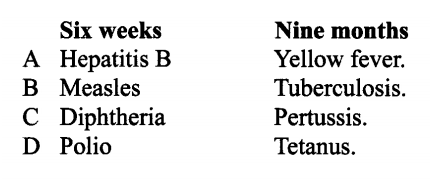
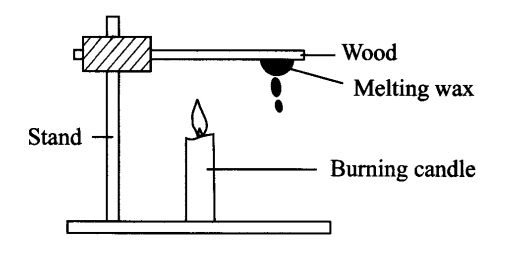
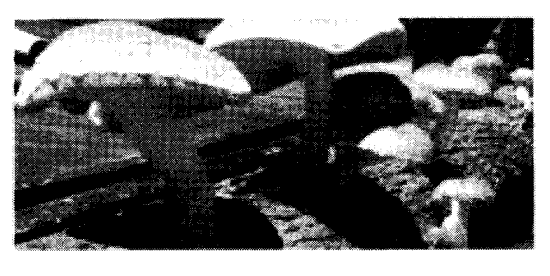
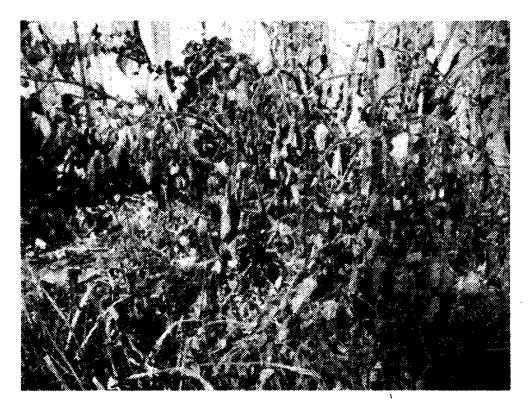
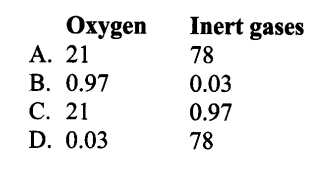

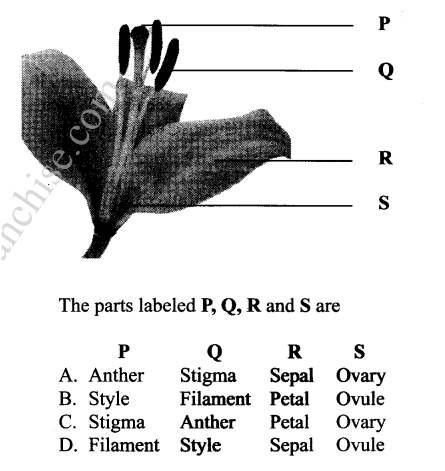

![KCPE PAST PAPERS 2014: SCIENCE QUESTIONS AND ANSWERS [QNS 26-50]](/uploads/6/0/4/0/60406393/published/dsc05762.jpg?1573182512)
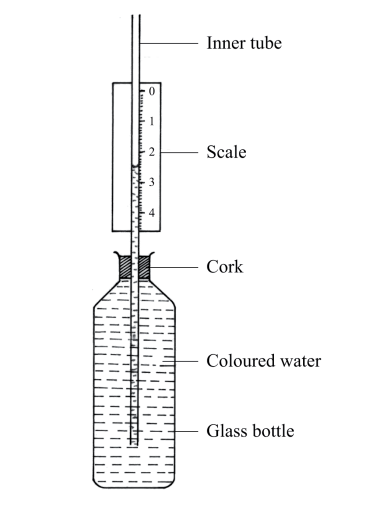
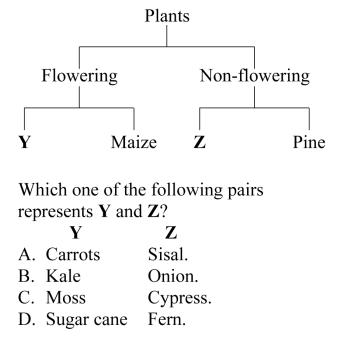
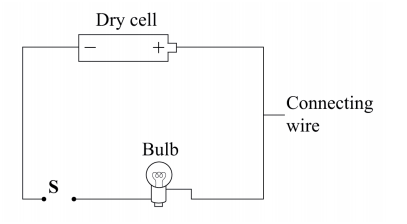

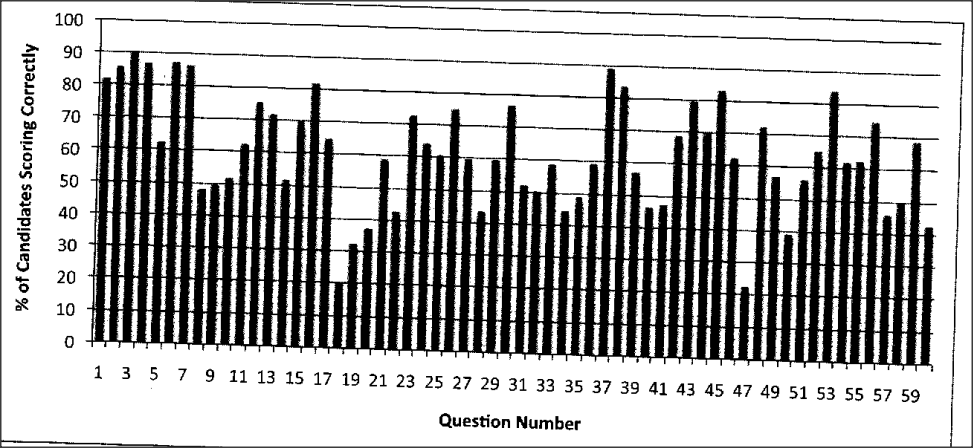
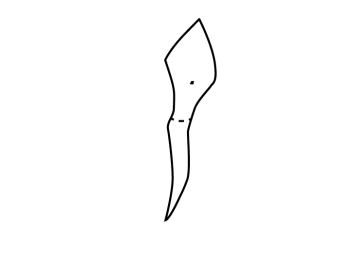
![KCPE PAST PAPERS 2014: SCIENCE QUESTIONS AND ANSWERS [QNS 01-25]](/uploads/6/0/4/0/60406393/published/dsc00684.jpg?1573097585)
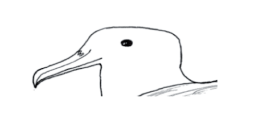
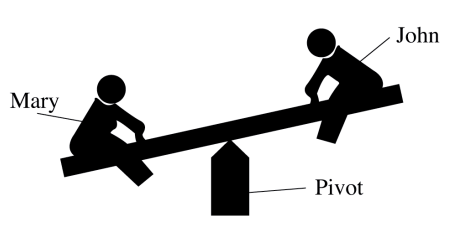
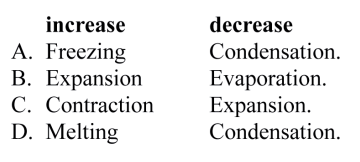
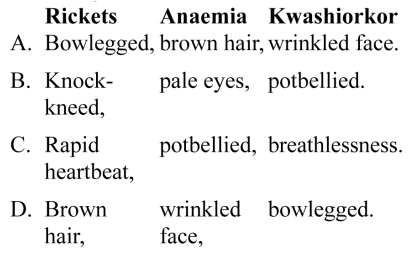
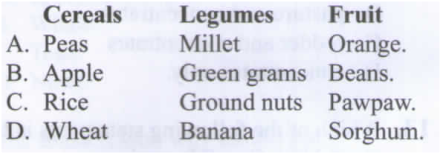
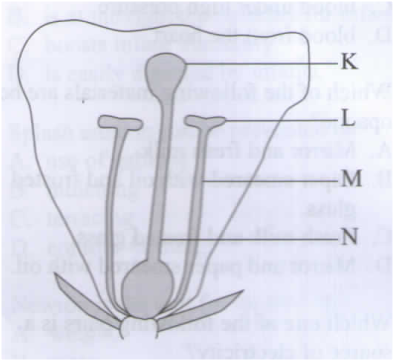
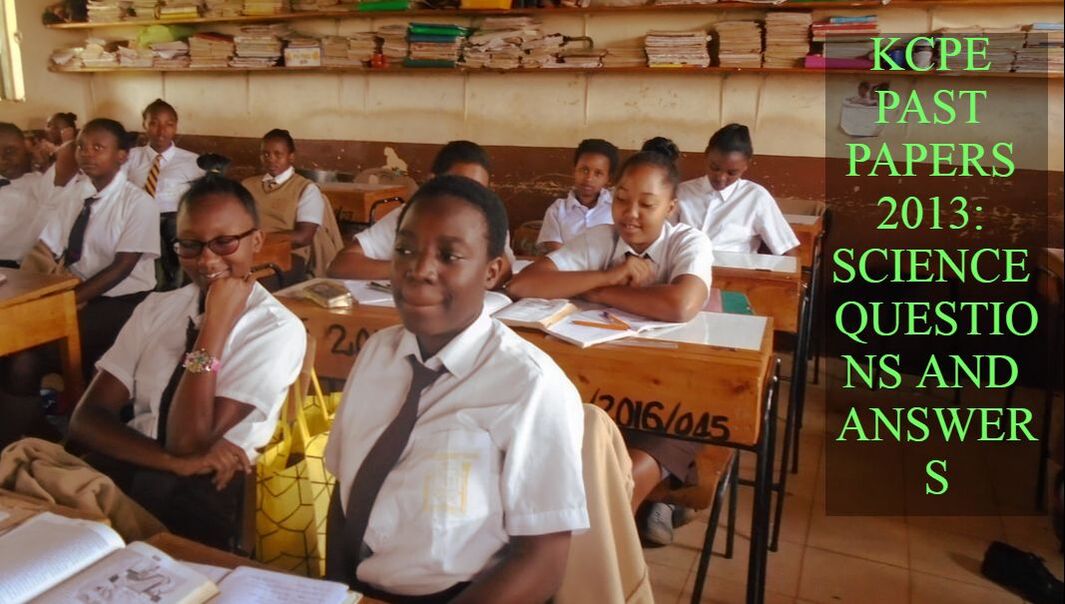
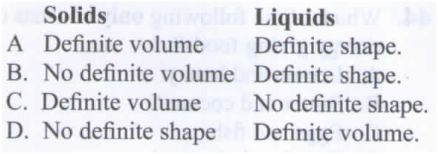
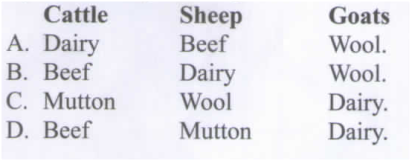
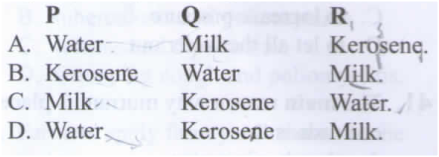
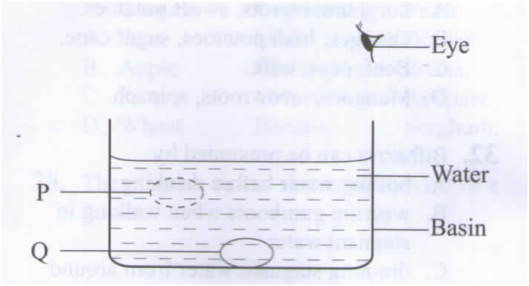
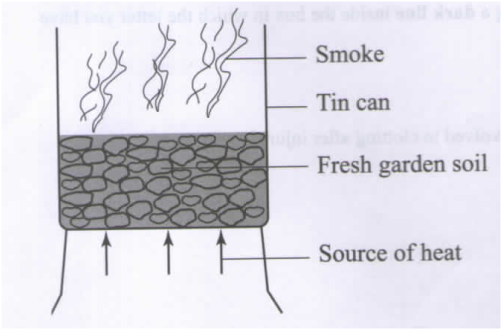
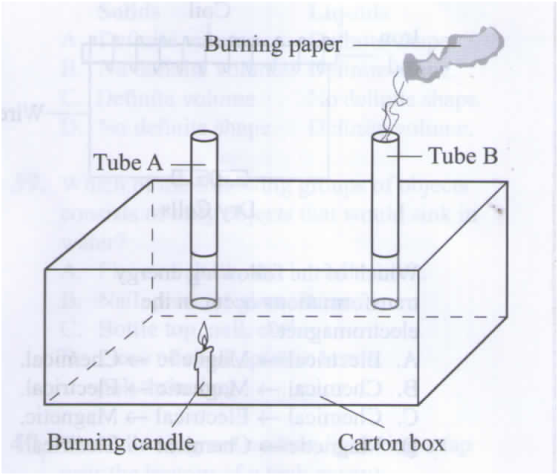
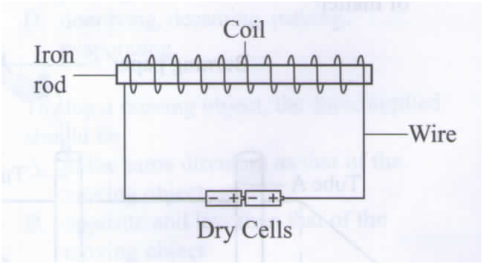
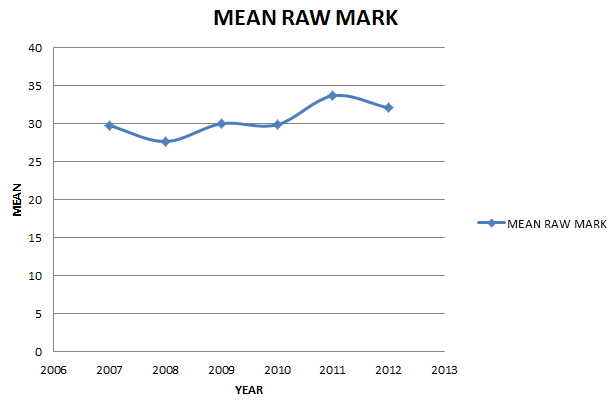

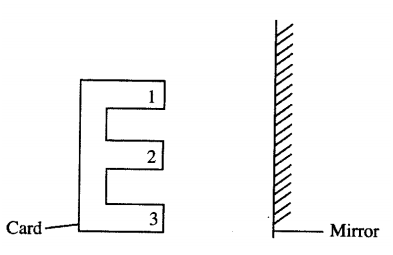
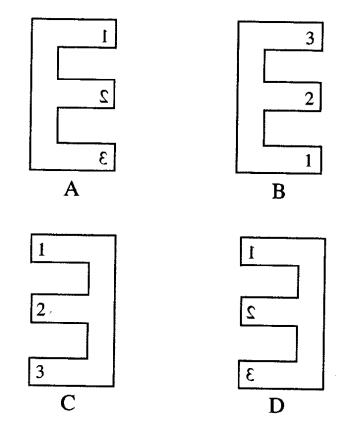
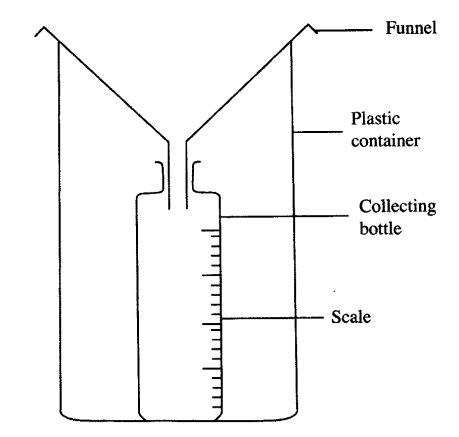
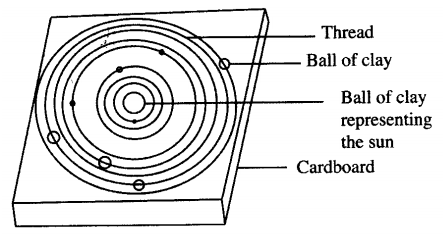
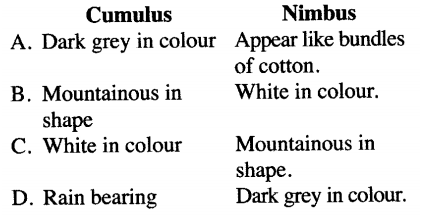

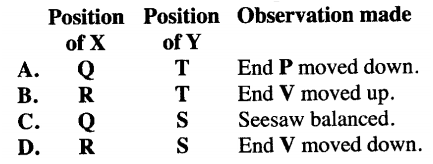
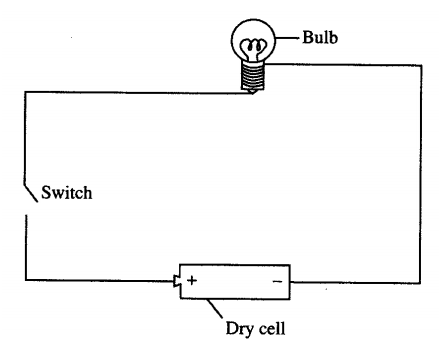
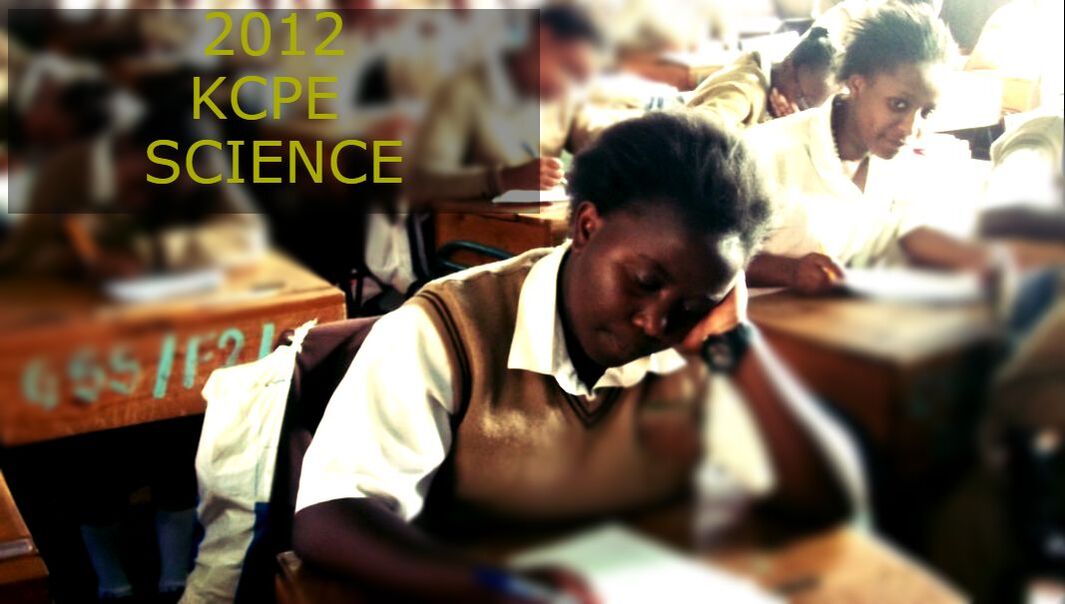
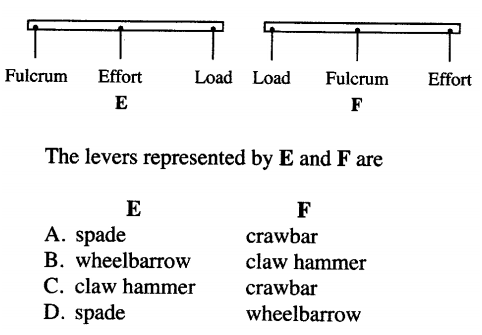
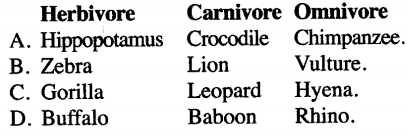
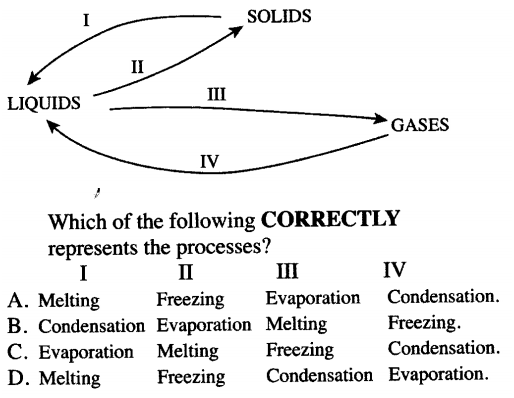


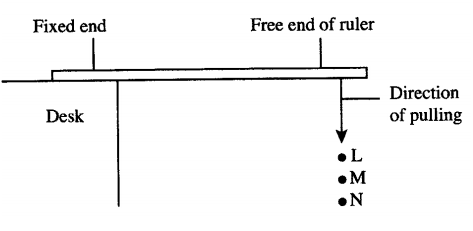
![KCPE PAST PAPERS 2005: SCIENCE QUESTIONS AND ANSWERS [QNS 26-50]](/uploads/6/0/4/0/60406393/published/dscf4204.jpg?1572776969)
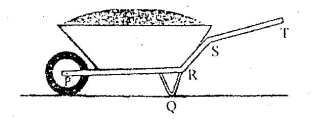
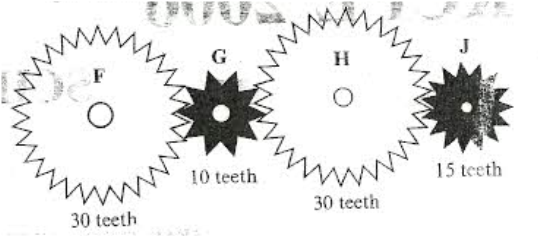
![KCPE PAST PAPERS 2005: SCIENCE QUESTIONS AND ANSWERS [QNS 01-25]](/uploads/6/0/4/0/60406393/published/dsc00886.jpg?1572758563)
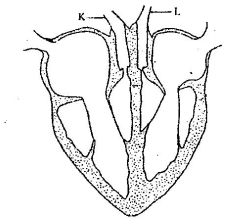
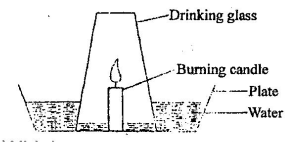

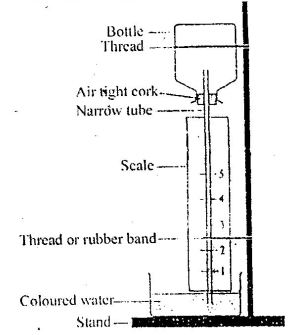
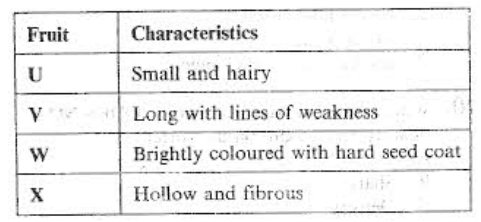
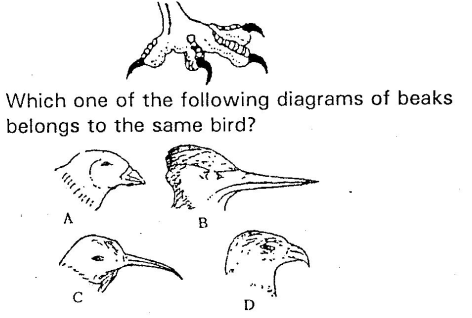

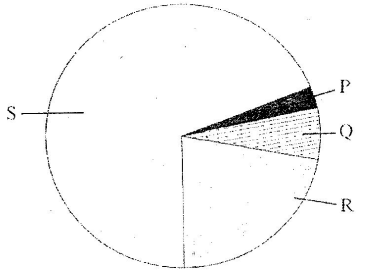
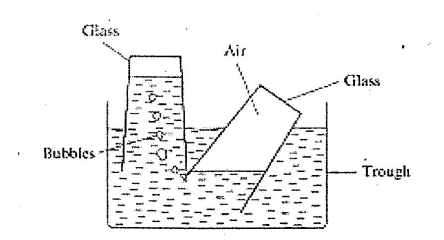
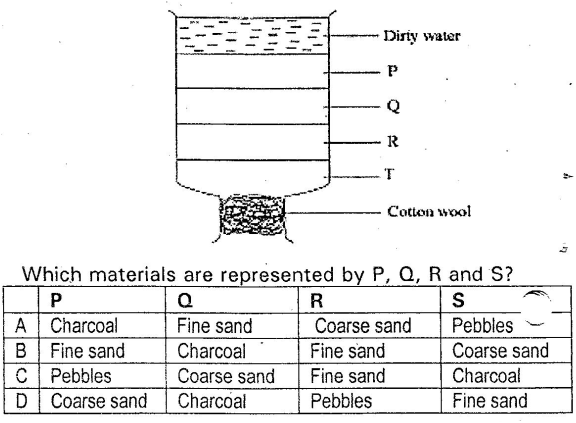
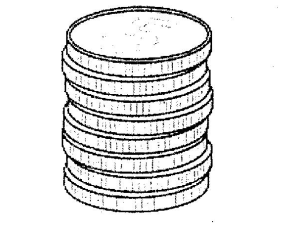
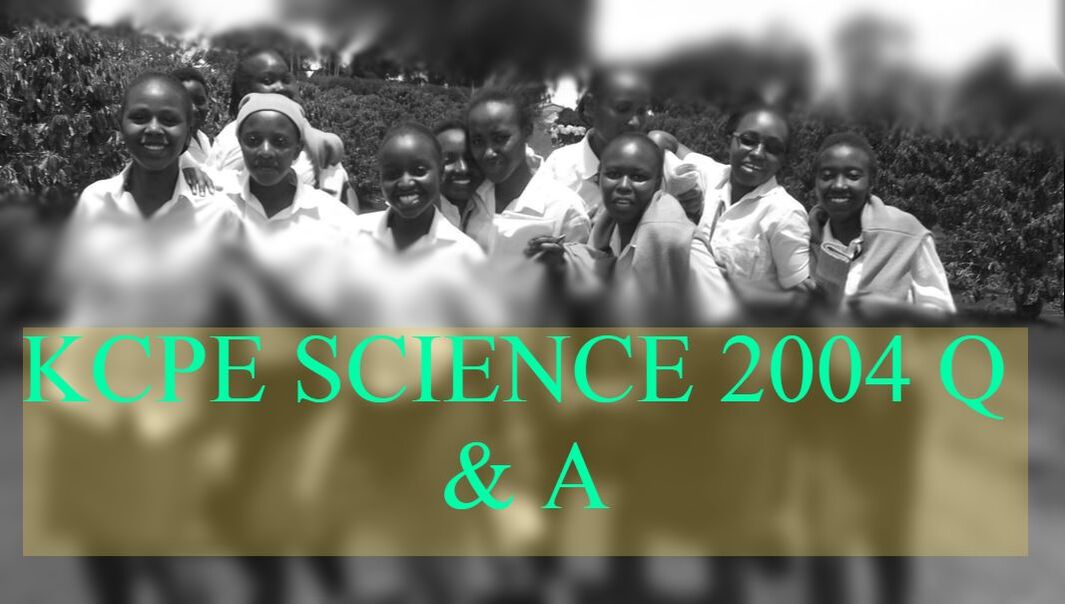

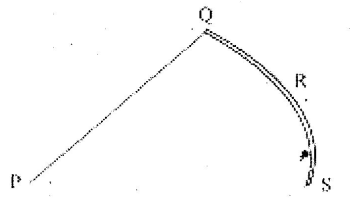
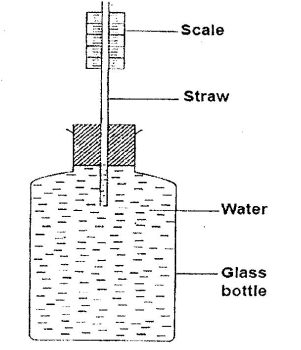
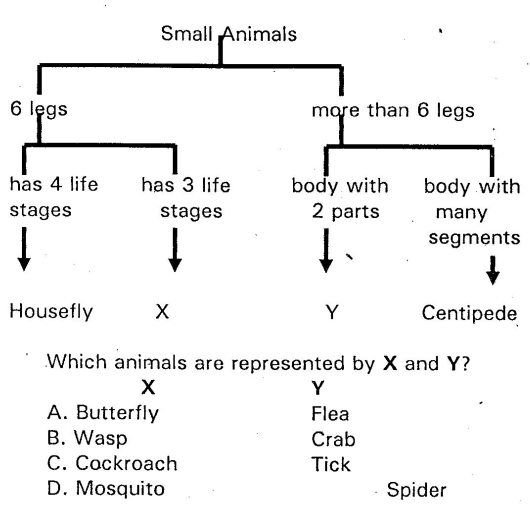
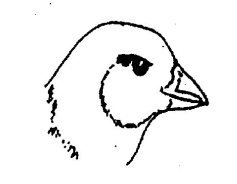
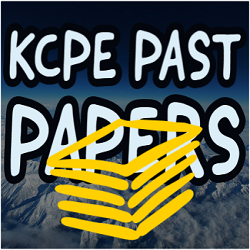
 RSS Feed
RSS Feed

